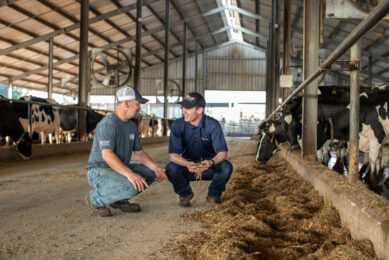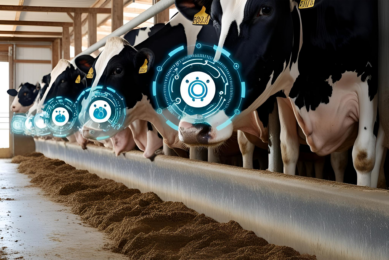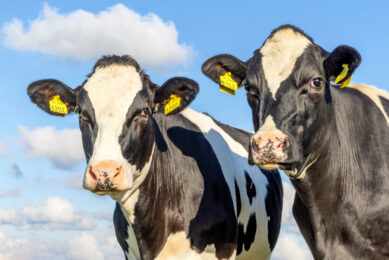Be more sustainable with low crude protein animal feed

Following recent estimations, the livestock supply chain may be responsible for 53% of anthropogenic nitrous oxide and 5% of carbon dioxide emissions. Animal production has an impact on environmental issues like global warming. Therefore, a precision animal nutrition is necessary to meet exactly the nutrient requirements.
Currently, 8 out of 10 essential amino acids are commercially available, making it possible to further develop the advantages of a low crude protein (CP) strategy. Reducing the CP level while fulfilling the amino acid requirement by supplementing crystalline amino acids, decreases faecal and urinary nitrogen excretion and consequently reduces the environmental nitrogen load. Protein sources such as soybean meal typically contain twice as much phytic acid compared with grains (wheat and corn). Thus, a low CP strategy not only reduces nitrogen excretion but will reduce phosphorus excretion too. Lowering the CP content of pig´s and poultry diets is therefore an important approach to improving the sustainability of the whole sector.

Lower nitrogen emissions in pigs
Nitrogen excretion is still one of the major critics of modern pig production. Using the ideal protein pattern, it is possible to reduce the dietary CP content while maintaining the pig´s growth performance and carcass traits. Wang et al. (2018) recently summarised that each 1% decrease in dietary CP content, will reduce the nitrogen excretion by almost 2.8%. An additional environmental benefit has been shown through a reduction of dietary CP from 14.5% to 12.0%. The low CP group caused a significant impact on manure concentration of volatile fatty acids, phenols and N20. Thus, the potential to decrease the environmental load by changing dietary strategies is huge. Combining different nutritional strategies (e. g. lowering CP intake, inclusion of fermentable fibre and adding acidifying salts) may lead to 70% reduction in ammonium emission in growing-finishing pigs.
Another study tested the effects of a reduction in dietary CP content on N-retention and growth performance. A reduction in CP from 19.7% to 16.8% led to no changes on N-retention while at the same time N-excretion was lowered by 29%. Further CP reduction down to 12.7% resulted in a decrease in N-retention. However, performance was successfully maintained by supplementing L-Val, L-Ile, L-Leu, L-His, and L-Phe to a diet with 4% lower CP content. To conclude, the usage of crystalline AA allows to formulate very low CP diets in swine without impairing performance. Moreover, all the tools to further reduce the nitrogen excretion caused by animal production are in place.

CP reduction strategy in poultry
Poultry nutritionists have different approaches towards ration formulation globally, which is related to the availability of the local raw materials, environmental conditions, local regulations, and production targets. However, the one-point on the agenda for everyone is to focus on reducing the feed cost without losing the animal’s performance.
A high-density diet is not always economical, therefore, it is required to pay attention to the utilisation of expensive resources and try to maintain the major nutrients while keeping the optimal performance. The major environmental burden of broiler production is eutrophication (ammonia emission water pollution) and soil acidification. Ammonia is emitted from manure by the breakdown of undigested protein and uric acid. Several studies have shown a reduction in N excretion by about 10% with a 1 percentage point decrease in the dietary CP contents in broilers.
Dietary manipulation could directly affect the nutrient excretion. The crude protein reduction strategy will not only reduce the impact of animal production on the environment but also supports economical feed production.
Reducing N excretion in poultry
The magnitude of CP reduction in poultry is much lower compared to pigs. A study conducted in 2019 tested the lowering of CP in grower (CP: 20.8-17.8%) and finisher (CP:19.8-16.8%) diets in broilers. Continuous reduction in CP while keeping the nutrient contents of the diet constant did not impact the BWG of the animal. However, there was a significant improvement in FCR in the diet with 17.6% CP as compared to control diet (CP:19.1%).
The poultry industry has huge protentional towards sustainable production. According to estimates from FEFAC total poultry feed production in 2019 in EU-28 was 55999 (000MT). If on an average 0.5% CP is reduced in total poultry feed production, it carries a potential of reducing estimated N excretion by 2799 (000MT).
References are available on request
Author:
Technical Marketing team, CJ Europe GmbH
Join 13,000+ subscribers
Subscribe to our newsletter to stay updated about all the need-to-know content in the dairy sector, two times a week.






